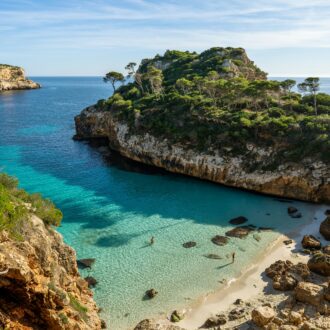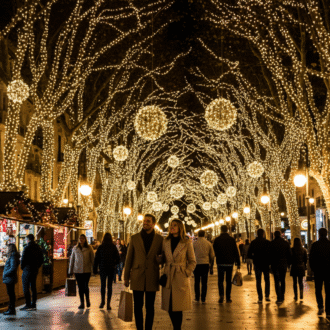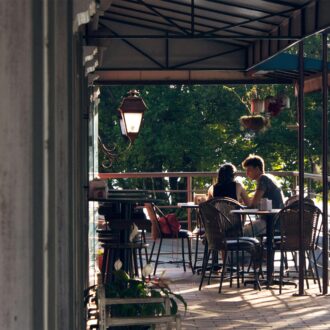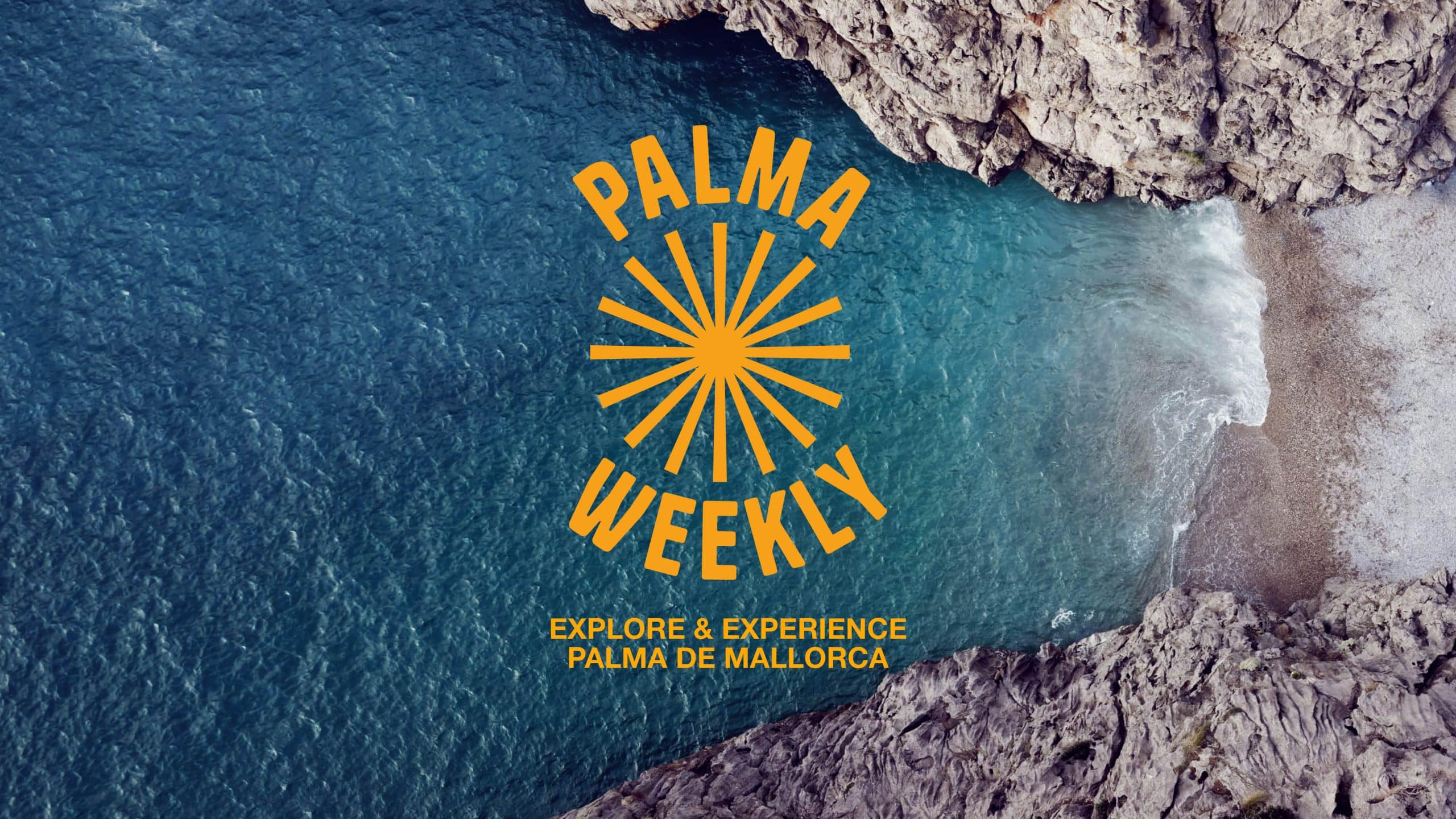Sa Calobra, Mallorca – The Dramatic Road to the Sea
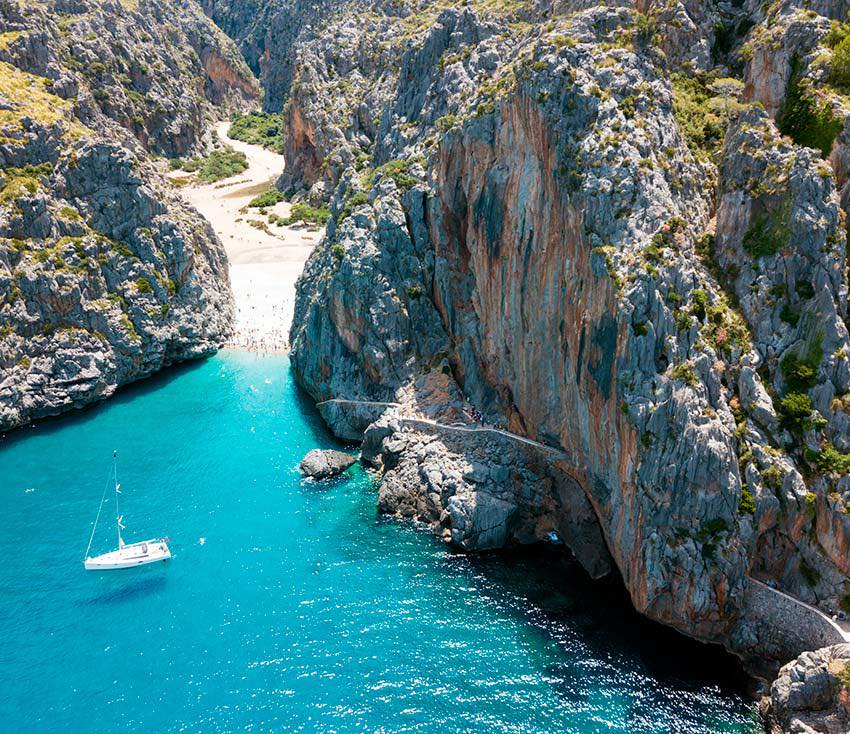
The Wild Beauty at the End of the Road
Few journeys in Mallorca compare to the descent into Sa Calobra, the remote coastal gorge where the Torrent de Pareis river carves its way through the Serra de Tramuntana before meeting the sea. The approach is unforgettable — 26 hairpin bends, limestone cliffs, and an engineering masterpiece that feels like a rollercoaster carved into the mountainside.
Every twist of the Ma-2141 road reveals another dramatic view, until the final tunnel opens to a narrow cove of turquoise water framed by towering rock walls. Whether you arrive by car, bike, or boat, Sa Calobra is one of those rare Mallorcan places where the journey and the destination share equal glory.
🚗 The Famous Road to Sa Calobra
The route from Escorca to the coast is among Europe’s most scenic drives — 13 km of perfect curves known as Nus de sa Corbata (“the tie knot”). Designed by engineer Antonio Parietti in the 1930s, it drops nearly 800 metres to sea level without a single tunnel through the mountains.
- Distance from Sóller: 38 km (≈ 1 hour drive)
- From Palma: Around 1 h 30 min via Inca → Lluc → Escorca
- By bike: A must-do climb for serious cyclists
👉 If you’re unsure about tackling the bends yourself, consider the boat from Port de Sóller — a calmer, equally stunning way to arrive.
Tip: Book your car early with Discover Cars — compact models handle the corners best, and parking at the bottom is limited.
🧭 Getting There from Palma
| From Palma | Time | Notes |
| Drive (Ma-10 → Ma-2141) | ~90 min | Iconic hairpins and narrow sections; paid parking near the cove fills on peak days. |
| Bus (seasonal, via Tramuntana hubs) | ~2–2.5 hr | Services vary seasonally; connections via Sóller/Lluc. Best for light packers. |
| Boat (from Port de Sóller) | ~1 hr each way | Scenic and stress-free; good sea-day alternative to the road. |
| Nearby | — | Cala Tuent • Port de Sóller • Serra de Tramuntana • Pollença (via Ma-10) |
🅿️ Parking & Facilities
Parking sits at the end of the road near the tunnels leading to the beach.
| Detail | Information |
| Cost | ~ €0.03 per minute (≈ €1.80 per hour) |
| Facilities | Café, toilets, souvenir kiosks |
| Access | Two pedestrian tunnels connect the car park with the cove |
| Tip | Arrive early or late afternoon to avoid coach traffic |
🌊 Torrent de Pareis – Mallorca’s Natural Cathedral
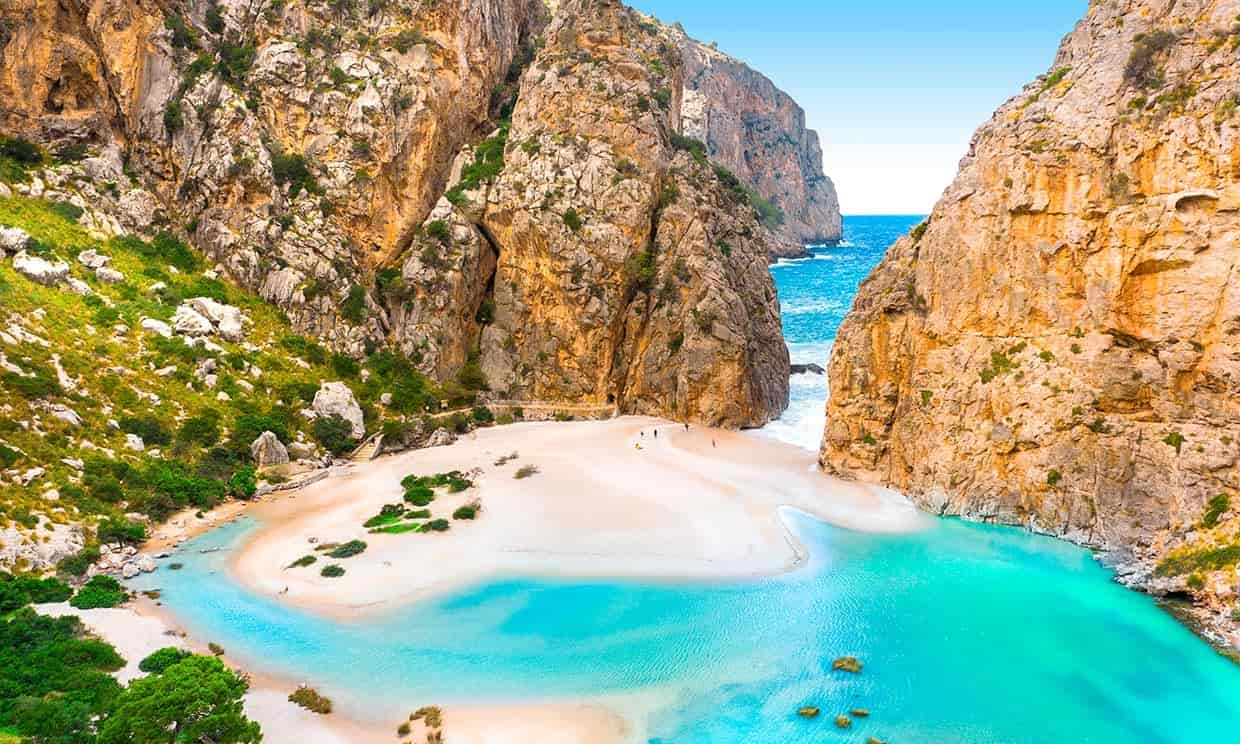
Emerging from the second tunnel, you enter the Torrent de Pareis, a dramatic gorge of sheer limestone walls rising more than 200 metres. The streambed opens onto a small pebble beach where crystal-clear water reflects shades of blue and green.
- Hike option: The full Torrent de Pareis trail from Escorca (≈ 5 hrs) is legendary but only safe in dry weather and ideally with a local guide.
- Beach type: Pebble; bring water shoes.
- Shade: Minimal — pack sunscreen and water.
- Services: None beyond the car park.
Sa Calobra isn’t a typical sunbathing spot — it’s a natural amphitheatre for anyone who loves geology, photography, or pure Mallorcan wilderness.
📍 The Soller → Sa Calobra Route
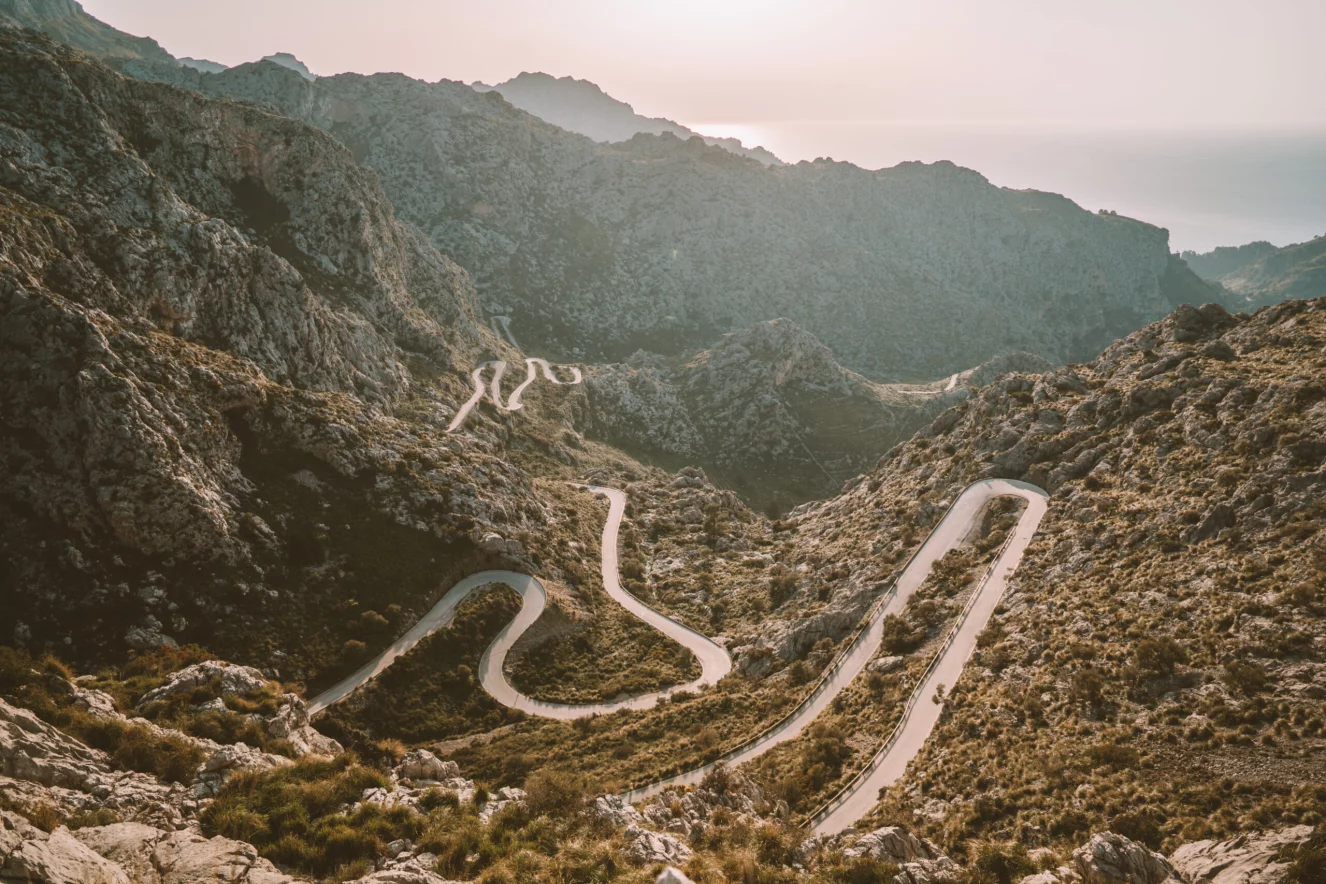
If you’re driving or cycling from Palma via Sóller, don’t miss our dedicated road trip guide:
Road Trip Sóller → Sa Calobra — it covers every viewpoint, rest stop, and insider tip along this mountain stretch, including the famed Mirador de Ses Barques overlooking the bay.
📸 Things to Do Nearby
| Activity | Distance | Why Go |
| Boat to Port de Sóller | From the pier | A relaxed return route with sea cliffs |
| Lluc Monastery | 22 km | Historic pilgrimage site and scenic base |
| Caimari & Selva villages | 35 km | Authentic inland Mallorca; olive-oil tastings |
| Cycling & Hiking routes | Across Tramuntana | Endless climbs and views for active travellers |
🍴 Where to Eat
- Restaurant Sa Calobra – casual seafood near the port.
- Bar Torrent de Pareis – sandwiches and drinks right by the cliffs.
- Es Gorg Blau (on the road) – rustic restaurant popular with cyclists.
🏨 Where to Stay Nearby
There are no hotels in Sa Calobra itself, but great bases surround it:
- Lluc Monastery Guesthouse – simple, spiritual stay in the Tramuntana.
- Bikini Island & Mountain Hotel (Sóller) – bohemian style with bay views.
- Can Aulí Luxury Retreat (Pollença) – boutique charm and mountain access.
⚡ Practical Tips
- Best time: Late spring – early autumn.
- Avoid: Midday bus tours; roads are narrow.
- Gear: Swim shoes, water, hat, and camera.
- Weather: Avoid the gorge after heavy rain — flash floods occur.
- Connectivity: Weak signal; download maps in advance.
🎞️ History & Did You Know?
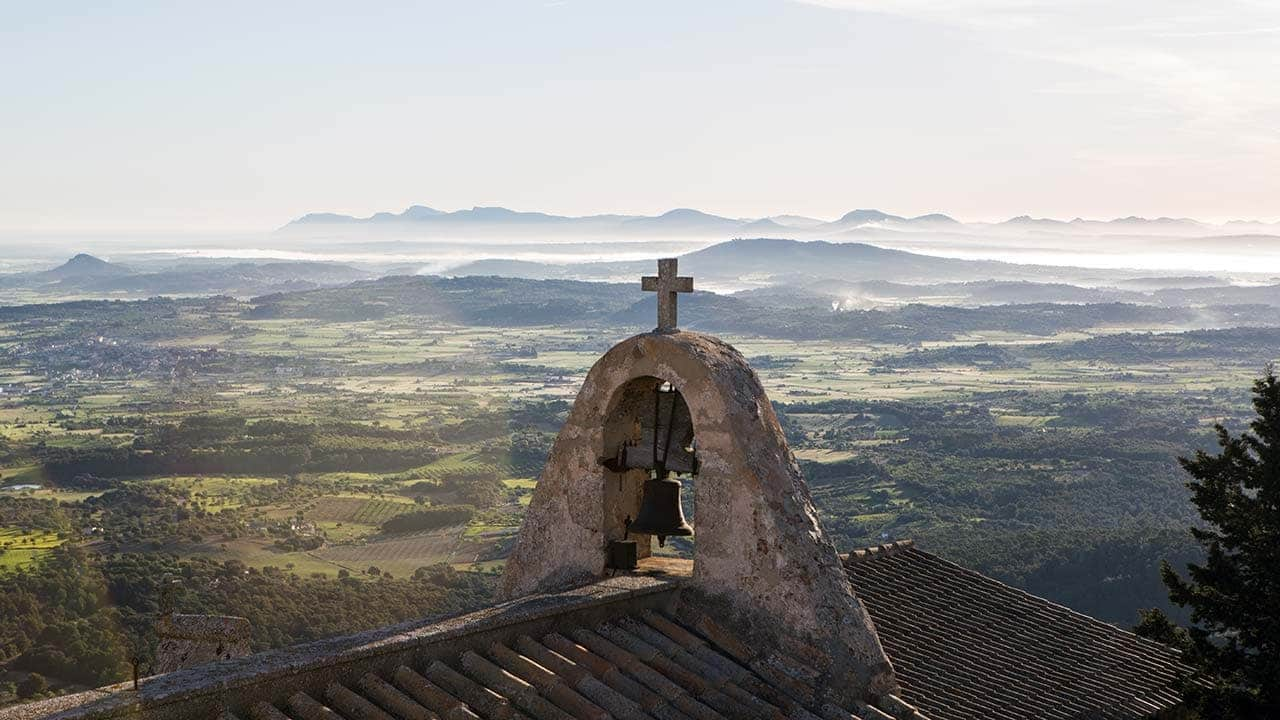
- The Ma-2141 road was built in 1932 entirely without explosives.
- “Sa Calobra” means the snake, a nod to its twisting descent.
- Declared a Natural Monument in 2003.
- Film crews love it — from car commercials to Cloud Atlas (2012).
- The Torrent de Pareis Concert, held each July, turns the gorge into a natural open-air stage.
Is the Sa Calobra road dangerous?
Not if driven carefully. Use low gear, respect cyclists, and pull over for buses.
Can you swim there?
Yes — the water is clear and deep but the seabed is rocky.
Is there public transport?
Yes, limited summer service via TIB 355 from Inca → Lluc → Sa Calobra.

